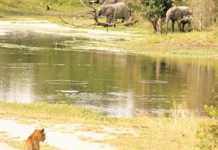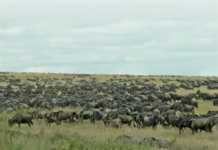
Most timber growers in South Africa I’ve met don’t apply any fertiliser whatsoever. Some may add a small amount to saplings at planting time, but very seldom – if ever – is fertiliser applied to plantations once they’ve been established. Worse, scant attention is paid to the fertility of soils before trees are planted.
The general consensus is that it does not pay to fertilise timber trees. Instead, when farms are bought for establishing timber, trees are simply planted over the entire area. Legislation prevents plantations from being planted too close to waterways. To me this seems to show a major disregard for sound scientific practice. For example, one of the most important things you need to do when buying a farm is to draw a map that shows soil depth and fertility status.
This is vital for determining what crops can be grown and how much lime, phosphate and other minerals are required. As far as I can gather this rarely happens in the timber industry! Scientific crop farmers monitor the mineral status of their soils on an ongoing basis, making the necessary corrections to ensure optimum yield.
In stark contrast, I’ve seen a land being prepared for re-planting to timber immediately after the trees were felled. These had been drawing nutrients from the soil for 25 years, yet the farmer wasn’t contemplating replacing any for the new crop! He changed his mind after I took a soil sample which revealed massive mineral shortages and imbalances. We’re now conducting a trial to see what the next crop’s response will be to a full soil mineral correction.
I foresee a radical improvement in the profitability of timber farming by combining the Albrecht principles of soil mineral balancing with biological farming practices and incorporating livestock. The aim would be to plant trees in a well-mineralised soil, which will continue to generate nutrients for the entire lifespan of the trees.
Natural fertility
Production practice will, of course, have to change. Tree row spacing will have to be widened and trees that do not block out all sunlight planted in preference to those that do. This will make it possible to establish a multi-species-pasture (MSP) of temperate grasses and legumes, a mixture well-suited to most timber-growing regions in South Africa. Full soil mineral correction based on the Albrecht specifications must be made to ensure the productivity and longevity of pasture planted in the wide pathways between the tree rows.
When the trees are still very young, the MSP is mulched to improve the soil ecosystem’s ability to build up the natural fertility of the soil.
Grazing cattle
Grazing by cattle can commence when the trees are large enough not to be damaged by the animals, which will add to natural soil fertility. Provided the grazing is well managed, MSP pasture can be productive for 30 years or more. Moreover, it will continue to build soil fertility over its entire lifespan – fertility trees can benefit from. In turn, via their roots, the trees supply some of the bio-fuel needed to keep the tree-pasture-soil ecosystem running.
The cherry on top is that income derived from cattle has the potential to make a substantial contribution to the profitability of timber farming.
John Fair is a leading expert on pastures. He heads up Fair’s Biofarm Assist, and can be contacted at 058 622 3585 or [email protected].













